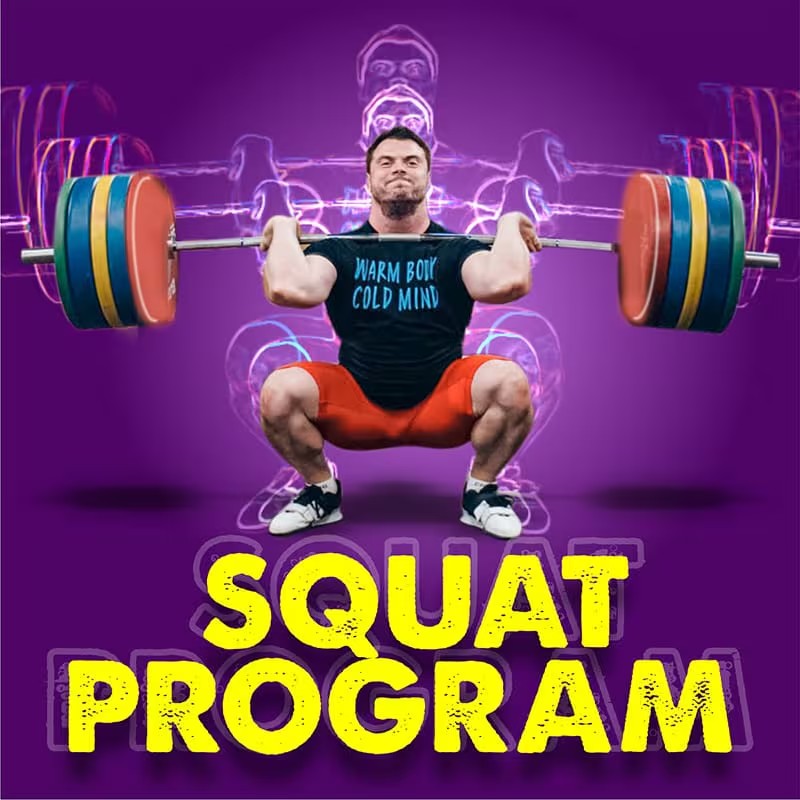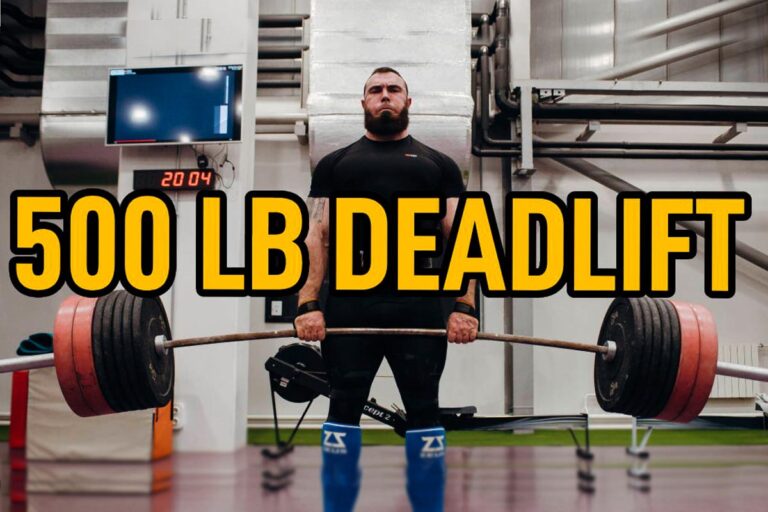How To Squat 405 lbs: Is It a Good Result?
Squatting 405 lbs is more than just a show of strength. It’s a landmark achievement in the world of fitness and strength training. This impressive milestone is often seen as a level, symbolizing not only physical power, but also dedication, discipline and technical proficiency. For fitness enthusiasts and athletes alike reaching 405 pound squats represent a significant personal and athletic achievement.
To learn how to squat 405 lbs, you must adhere to progressive training plan, emphasizing base building, strength, increase and peaking, while maintaining focused nutrition and recovery protocol.
The answer to the question of how to squat 405 lbs lies in its challenge. It’s a weight that demands respect and preparation, pushing individuals to the limits of their physical capabilities. This goal is not just about brute strength, it involves mastering the correct technique, building a solid foundation of overall fitness and understanding the intricate balance between power and safety.

Is 405 lbs a Good Squat?
In the realm of strength training, squatting 405 lbs is often regarded as a benchmark of superior strength. To put it in perspective, for the average gym goer this weight is a lofty goal, well beyond the standard fitness requirements. In competitive circles like powerlifting a 405 lbs squat can be a competitive entry point in certain weight classes, but for others it’s a stepping stone to heavier lifts.
The interpretation of a 405 lbs squat varies significantly based on several factors, including weight class, age and gender. For instance, in lighter weight classes lifting this amount is an extraordinary feat, often placing the litter at an advanced or a little level. Conversely, in heavier weight categories, it might be seen as a more intermediate achievement.
Age and gender play crucial rules in contextualizing this goal. Younger athletes, especially those in their physical prime, might find reaching this milestone more achievable due to factors like muscle density, recovery rate and hormonal advantages. For older lifters squatting 405 lbs can be particularly impressive, showcasing their commitment to maintaining strength and fitness.
Gender differences also impact how this goal is viewed due to physiological factors. A 405 lbs squat is relatively more challenging for women, making it an exceptional accomplishment in women strength sport.
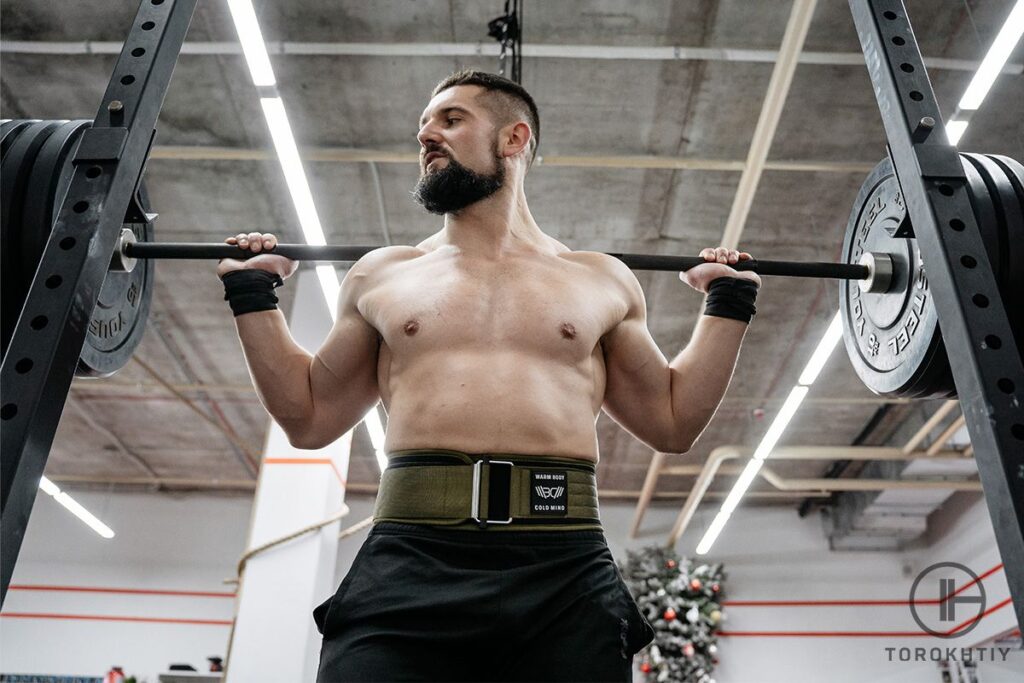
Preparing Your Body
The journey to 405 lbs squat begins with a solid foundation in overall strength and conditioning. Achieving this goal is not just about training your legs, it’s about developing a balanced strong body, capable of handling heavy loads safely and efficiently.
This means engaging in a comprehensive strength training regimen that works all major muscle groups with particular focus on back, hips and core in addition to legs. Such a well-rounded approach ensures that your body can support the heavy squatting demands both structurally and functionally.
Central to this preparation is the development of course, strength and stability. The core muscles encompassing the abdominals, obliques and lower back act as a stabilizing center of the body. A strong core is essential for maintaining proper posture and form during squats, especially when under the strain of 405 lbs. It acts as a link between the upper and lower body, transferring force and maintaining balance, which is crucial for successful and safe lift.
Additionally, mobility and flexibility play vital roles in preparing to squat, significant weights. Good hip, ankle and thoracic spine mobility allow for a deeper, more efficient squat, without compromising form.
Flexibility in this area helps in achieving the full range of motion required for a deep squat, reducing the risk of injury and ensuring that the muscles and joints are working harmoniously. Regular stretching, mobility drills can greatly enhance these aspects, making the journey to 405 lbs squat, smoother and safer.
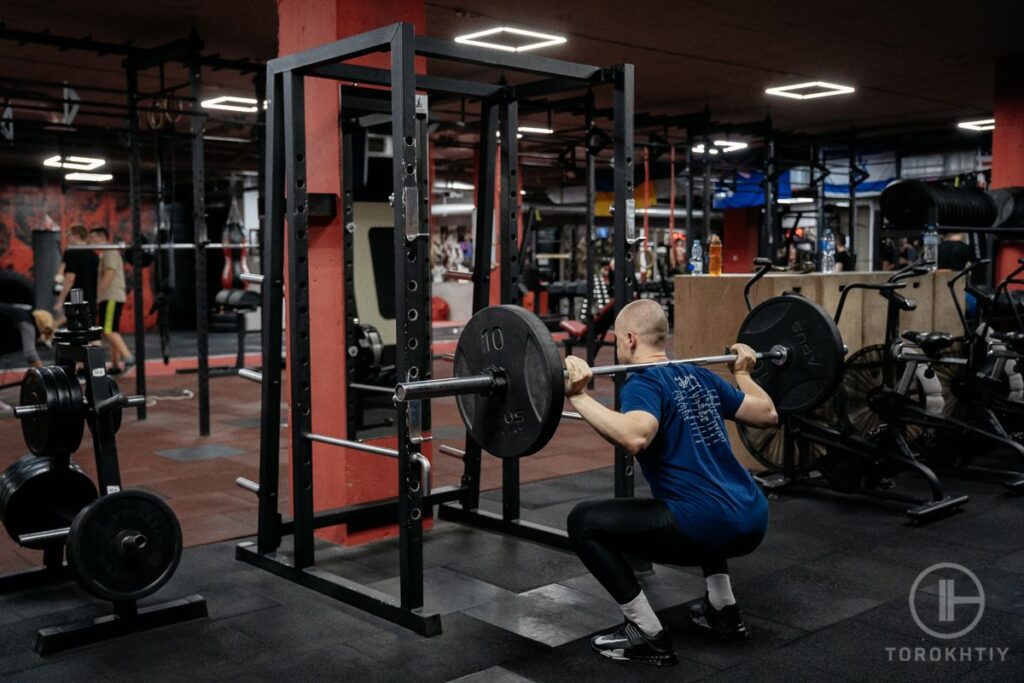
Training Plans and Progression
To squat for 405 lbs a structured and progressive training plan is essential. This plan should be divided into phases: building a base, increasing strength and picking with each phase focusing on different aspects of your development. It’s also crucial to incorporate deloading and recovery periods to prevent overtraining and facilitate muscle recovery and growth.
1. Building a Base
- Duration: 6-8 weeks.
- Focus: developing overall muscle strength and endurance.
- Frequency: squat 2-3 times per week.
- Load: higher repetitions (8-12 reps) and moderate intensity 50-70% of your estimated max.
- Exercises: front squats, leg presses and lunges.
- Progression: gradually increase weight while maintaining high reps.
Day Example
- *Warm-up: 10 minutes of light cardio followed by dynamic stretching.
- Back Squats: 3 sets of 10 reps at 60% of max.
- Front Squats: 3 sets of 8 reps.
- Leg Press: 3 sets of 12 reps.
- Romanian Deadlift: 3 sets of 10 reps.
- Calf Raises: 3 sets of 15 reps.
- Core Work: Planks, 3 sets of 45 seconds.
- *Cool down: 10 minutes of static stretching, focusing on legs and lower back.
*Warm-up and Cool down blocks are mandatory for all training periods.
2. Increasing Strength
- Duration: 8-10 weeks.
- Focus: building squat-specific strength.
- Frequency: 2-3 squat sessions per week.
- Load: moderate to low volume (4-6 reps) at higher intensities (70-85% of your max.
- Exercises: Focus more on back squats, accessory exercises like deadlifts and leg curls.
- Progression: gradually increase the weight while lowering rep range.
Day Example
- Back Squats: 4 sets of 5 reps at 75% of max.
- Deadlifts: 4 sets of 6 reps.
- Bulgarian Split Squats: 3 sets of 6 reps per leg.
- Leg Curls: 3 sets of 8 reps.
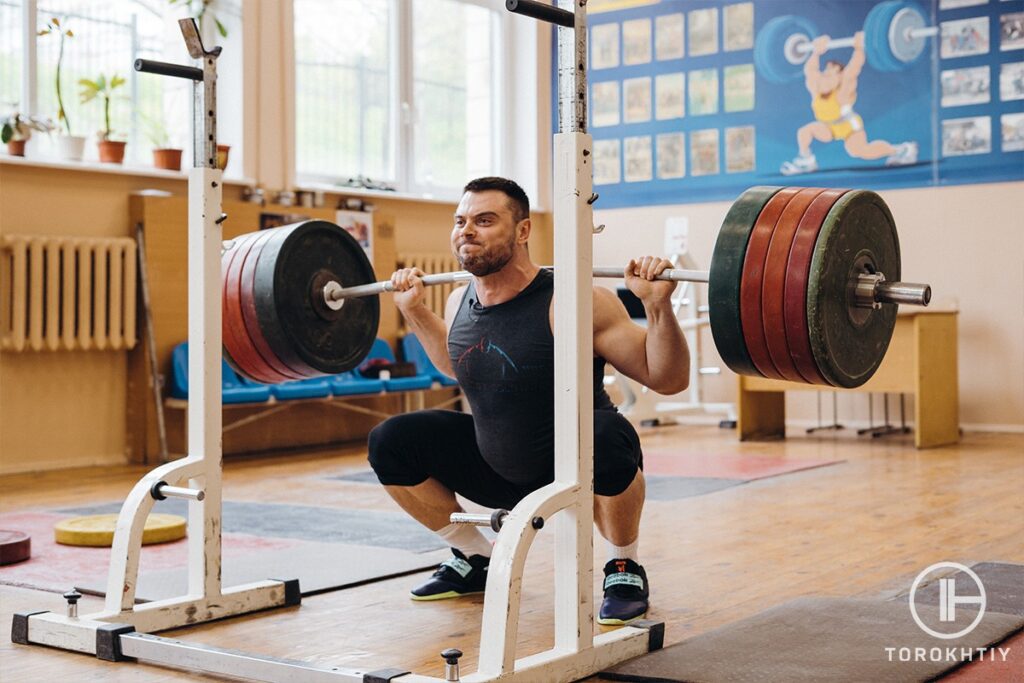
3. Peaking
- Duration: 4-6 weeks.
- Focus: maximizing squat strength.
- Frequency: squat 1-2 times per week with high intensity.
- Load: low volume (1-3 reps) at near maximal intensity (90-100% of your max)
- Exercises: primarily back squats with some light accessory work.
- Progression: aim to reach or exceed 405 lbs for single reps.
Day Example
- Back Squats: 3 sets of 2 reps at 90% of max.
- Paused Squats: 2 sets of 3 reps at 70% of max.
- Walking Lunges: 2 sets of 10 reps for each leg.
- Glute Bridges: 3 sets of 12 reps.
- Core Work: Side Planks 3 sets of 30 sec for each side.
🔻12 Week Squat Program by Oleksiy Torokhtiy
Do you want to double your squat strength? In just 12 weeks, you’ll be able to boost your squat results.
This program transforms any ordinary squat into a powerful athletic movement.
What’s included:
- 12 weeks of squat programming;
- Effective combination of sets, reps, and weights;
- Fully designed and coached by Oleksiy Torokhtiy;
- Over 60+ movements, banded work, and weight training;
- Accessory work for core, joint stability and injury prevention;
- Max out on back squat and front squat at the end.
Start now and boost your squat results!
4. Deloading and Recovery
- Duration: 1 week after each phase.
- Focus: allowing your body to recover and adapt.
- Training adjustment: reduce training load significantly (40-60% of usual).
- Activities: focus on mobility work, light cardio and stretching.
- Purpose: prevent overtraining, reduce injury risk and prepare for the next training phase.
Day Example
- Light Back Squats: 2 sets of 10 reps at 40-50% of max.
- Bodyweight Exercises: lunges, step-ups (2 sets of 10 reps).
- Light Core Work: planks and side planks up to 30 seconds.
Comfort Mobility Work.
Nutrition and Recovery
Proper nutrition is vital for strength gains, especially when training to 405 lbs squat. A diet rich in protein, supports muscle repair and growth, while adequate carbohydrates fuel intense workouts. Hydration and micronutrients also play crucial roles.
Recovery is equally important: quality sleep is non negotiable, as it`s when muscle growth and repair predominantly occur. Active recovery methods like light cardio or swimming aid in reducing muscle soreness and maintaining mobility.
Regular stretching and yoga enhance flexibility and aid in preventing injuries, ensuring that your body is well-prepared for the demands of heavy squatting.
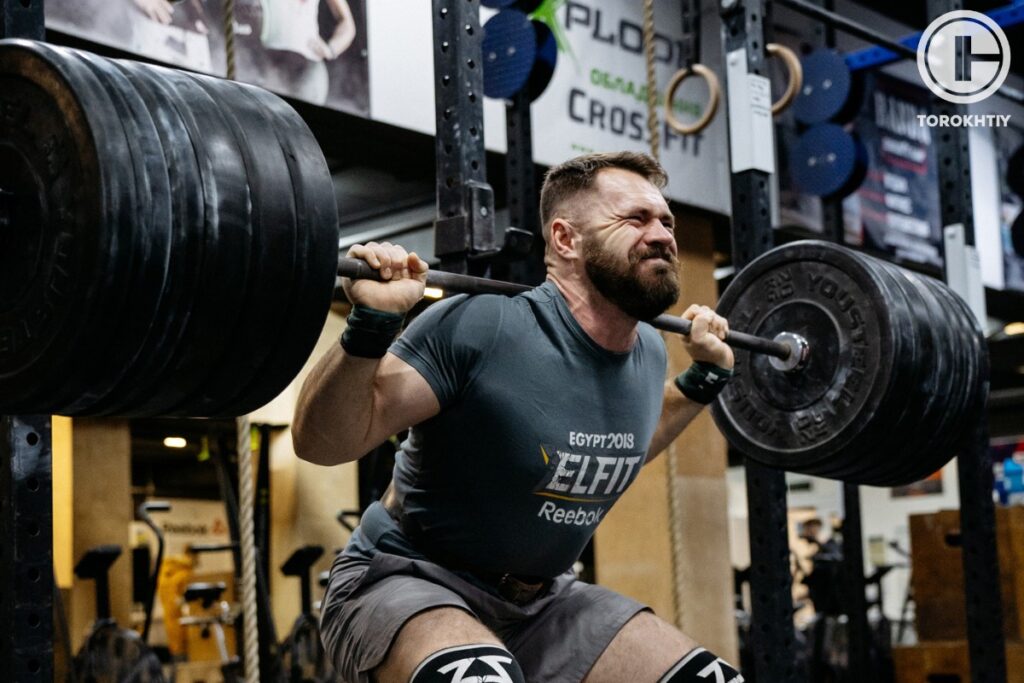
How Long Does it Take to Squat 405 lbs?
The timeline to squat 405 pounds is highly individualized, varying greatly based on factors like initial strength levels, training history, body composition and genetic predispositions. For beginners this journey might take over several years of consistent dedicated training. An intermediate lifter who has been training consistently might reach this goal in a year or two.
Additionally, external factors, such as lifestyle, stress levels and access to coaching can influence progress. Regular coaching and a supportive training environment can accelerate improvements, while high stress and poor sleep can significantly hinder progress.
In essence, the path to squatting 405 lbs is a personal journey. It requires patience, dedication and a well-structured approach. Comparing one`s progress with others, can be motivational, but it’s crucial to understand and respect the uniqueness of your own strength journey.
FAQ
Is a 405 Squat Possible?
Absolutely, a 405 lbs squat is possible and is a goal many lifters aim for. With consistent training, proper nutrition and dedication to technique and recovery, both novice and experienced athletes can achieve this significant milestone over time.
Is a 405 Deadlift Strong?
Yes, at 400 lbs deadlift is considered strong across various strength levels. It’s often seen as an intermediate to advanced weightlifting goal and is a testament to an individual`s solid back, core and leg strength. Reaching this weight is a notable achievement in the strength training community.
Conclusion
Squatting 405 lbs is a commendable goal that symbolizes strength, discipline and dedication. Remember, the journey to this milestone is as important as the achievement itself encompassing proper technique, comprehensive training, sound nutrition, and consistent recovery practices.
It’s a personal journey, unique for each individual, requiring patience and perseverance. As you embark on or continue this journey, do so responsibly, listening to your body and possibly second professional guidance.
Feel free to ask questions and share your experience and milestones with others in the comment section. Your story can inspire and guide fellow enthusiasts. Above all, celebrate each step of progress, as each one brings you closer to your 405 lbs squat goal.
Referenses:
- Wei W, Zhu J, Ren S, Jan YK, Zhang W, Su R, He L. Effects of progressive body-weight versus barbell back squat training on strength, hypertrophy and body fat among sedentary young women. Sci Rep. 2023 Aug 19;13(1):13505. doi: 10.1038/s41598-023-40319-x. PMID: 37598268; PMCID: PMC10439966.
- Clark DR, Lambert MI, Grigson C, Hunter AM. Impact of resistance training status on trunk muscle activation in a fatiguing set of heavy back squats. Eur J Appl Physiol. 2021 Feb;121(2):597-608. doi: 10.1007/s00421-020-04540-0. Epub 2020 Nov 18. PMID: 33206252; PMCID: PMC7862542.
- Kushner AM, Brent JL, Schoenfeld BJ, Hugentobler J, Lloyd RS, Vermeil A, Chu DA, Harbin J, McGill SM, Myer GD. The Back Squat Part 2: Targeted Training Techniques to Correct Functional Deficits and Technical Factors that Limit Performance. Strength Cond J. 2015 Apr;37(2):13-60. doi: 10.1519/SSC.0000000000000130. PMID: 26823657; PMCID: PMC4725067.
- Pérez-Castilla A, Janicijevic D, Akyildiz Z, Senturk D, García-Ramos A. Assessment of Back-Squat Performance at Submaximal Loads: Is the Reliability Affected by the Variable, Exercise Technique, or Repetition Criterion? Int J Environ Res Public Health. 2021 Apr 27;18(9):4626. doi: 10.3390/ijerph18094626. PMID: 33925379; PMCID: PMC8123869.
- Lee JH, Kim S, Heo J, Park DH, Chang E. Differences in the muscle activities of the quadriceps femoris and hamstrings while performing various squat exercises. BMC Sports Sci Med Rehabil. 2022 Jan 21;14(1):12. doi: 10.1186/s13102-022-00404-6. PMID: 35063016; PMCID: PMC8783452.
Why Trust Us?
With over 20 years in Olympic Weightlifting, our team does its best to provide the audience with ultimate support and meet the needs and requirements of advanced athletes and professional lifters, as well as people who strive to open new opportunities and develop their physical capabilities with us.
By trusting the recommendations of our certified experts in coaching, nutrition, dietology, and sports training programming, as well as scientific consultants, and physiotherapists, we provide you with thorough, well-considered, and scientifically proven content. All the information given in the articles concerning workout programming, separate exercises, and athletic performance, in general, is based on verified data. We ensure that you can rely on our professionals’ pieces of advice and recommendations that can be treated as personalized ones which will benefit you and fully meet your needs.
The product testing process is described in more detail here
Author: Sergii Putsov
Head of Sport Science, PhD
Best Results: Snatch – 165 kg,
C&J – 200 kg
Sergii Putsov, Ph.D., is a former professional weightlifter and National team member, achieving multiple medals in the 94 kg weight category at national competitions. With a Master’s degree in “Olympic & Professional Sport Training” and a Sport Science Ph.D. from the International Olympic Academy, Greece, Sergii now leads as the Head of Sport Science. He specializes in designing training programs, writing insightful blog articles, providing live commentary at international weightlifting events, and conducting educational seminars worldwide alongside Olympic weightlifting expert Oleksiy Torokhtiy.

